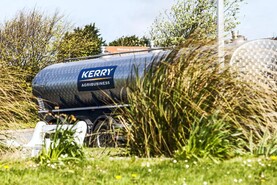The submission to Brussels by the Irish Government on the new Common Agricultural Policy is a formidable 560-page document.
While there is lots of jargon and comment on how complex proposals would be implemented, the basics are clear.
This is the most comprehensive statement of Irish agricultural policy I have ever seen but it’s in the context of reducing supports for productive farmers and increasing the obligations to be placed on all farmers.
You can’t argue with the opening stated objectives of supporting farm incomes and enhancing competitiveness while taking environmental and climate considerations into account, as well as the socio-economic fabric of rural areas.
Similarly, there is talk of lots of diversification opportunities
However, the document is vague – to put it at its mildest – on how many of its worthy aspirations can be met. For example, it talks of increasing producers’ share in the value chain but apart from an emphasis on more producer organisations, there is no commitment to any meaningful legislative proposals.
Similarly, there is talk of lots of diversification opportunities and adding value at farm level while a new forestry programme is planned.
It also states that Ireland is well placed to avail of the opportunities in the bio-economy as well the potential for outdoor recreation pursuits.
Yet there is no mention of the insurance problems that seem to be unique to Ireland regarding outdoor pursuits nor the legal logjam in the forestry industry.
Not surprisingly, the thrust of the document is heavily influenced by the Farm to Fork Green Deal measures coming from Brussels
The document is useful in that gives a sense of where agriculture and farming sits in a modern Ireland, where agricultural incomes are only 39.2% of the rest of the community and how “strong off-farm employment allows less profitable farming systems to remain economically viable”.
Not surprisingly, the thrust of the document is heavily influenced by the Farm to Fork Green Deal measures coming from Brussels. But I am not sure how it can talk about reducing fertiliser use by 20% “with no reduction in fertility”.
The document is useful as a comprehensive guide to the shape of the new schemes and payments covering everything from the intended training schemes for suckler farmers to the importance of the protein aid and straw incorporation scheme while throwing in the comment that dairy cow numbers are increasing faster than mitigation measures.
All in all, this is a valuable opportunity to get inside the mentality of who and what is really driving agricultural policy
It also has the sensible definition of an active farmer as one who bears “the economic and agricultural risk”.
All in all, this is a valuable opportunity to get inside the mentality of who and what is really driving agricultural policy. We have moved well beyond farming meaning food. The network of regulations, payments and penalties is mind-boggling.
We have little option but to get to grips with them if we are to stay in business.






 This is a subscriber-only article
This is a subscriber-only article









SHARING OPTIONS: